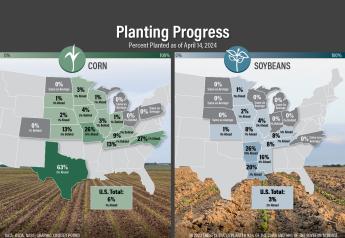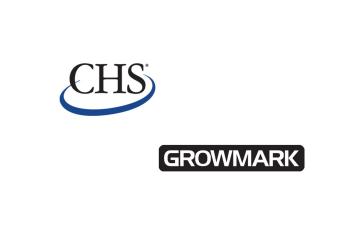Ferrie: Seize Your Corn Growing Opportunities for #Plant2023

In mid-March, most corn growers are focused on planting and understandably so since spring is just around the corner.
In the process, Ken Ferrie encourages farmers to give more thought to harvest.
“I know, I know, here I am talking about harvest when your mind’s on planting,” says Ferrie, Farm Journal Field Agronomist. “But to get a big corn crop harvested next fall, you have to work from that ultimate objective backwards to now.”
The desire to harvest as many bushels from every acre as possible – and in a timely, efficient manner – should guide your hybrid selection, placement in each field and management practices through the growing season.
Here are some additional things Ferrie says to keep in mind as you gear up for #plant2023.
1. For those of you still firming up your list of hybrids, always make yield your No. 1 objective.
“A dog’s a dog, even if it's got all the characteristics you want in that hybrid besides yield,” says Ferrie, owner of Crop-Tech Consulting Inc., Heyworth, Ill.
“We have a large set of hybrids today with a yield range that can cover all our needs,” he adds. “Once you have that determined, then we can start to use other factors like ear flex and leaf structure to trim this potential roster down to the hybrids you’re going to plant.”
2, Make sure you’re using a mix of maturities.
You can mitigate yield risk by selecting and using a mix of hybrid maturities in fields. That will spread out the timing of corn pollination and ultimately harvest.
“Designate hybrids as early, medium and late-maturing for your area,” he advises. “Plan to put half to two-thirds of hybrids in the maturity group that works the best on your acres, then split the remaining acres between the other two.”
Then, for the planting process, plant early hybrids first and the full-season ones last. This approach will stagger corn pollination and your harvest window.
“If you do it the other way around, planting from the longest to the shortest, you'll end up pollinating and reaching harvest on the same date, meaning that you had no mitigation of risk,” Ferrie says.
3. Consider how hybrids flex. When Ferrie talks about hybrid ear flex, it always refers to a type of loss and not a gain.
All hybrids will flex. Insects, disease, competition for nutrients and poor weather conditions contribute to flex. The degree of flex will vary by the amount of stress and when it occurs in the hybrid.
Here’s a brief summary of how and when hybrid types commonly flex:
• G hybrids flex down in the number of rows around the ear when they are stressed. Ferrie says this happens early in the growing season.
• L1 hybrids flex down in length, usually cob and all. “So, the ear may be filled to the tip, but it's only 30 (kernels) long,” he says. “This means that that hybrid flexed down in ear size before tassel.”
• L2 hybrids flex down in ear size after pollination. “So, it may be pollinated to 45 (kernels) or 50 long but it will work back to 30, leaving a shriveled ear tip with kernels on the end of it,” he says.
• D hybrids flex in kernel depth, which limits the amount of starch produced in the kernel later in a growing season.
The following examples highlight why understanding hybrid ear flex and managing it through spreading risk with hybrid selection is important.
“Many full-season D hybrids didn't make it to black layer in 2021 before tar spot shut them down,” Ferrie recalls. “A similar thing happened to our guys in northern Iowa and southern Minnesota last year who planted full-season D hybrids and then got caught by the September 28 frost. Here locally, some of our L1 hybrids, the ones that flex in length before tassel, didn’t handle the flash drought we had in June.”
4. Evaluate your harvest capabilities as you finalize hybrid selection and prepare to plant.
A little planning now can alleviate a lot of stress come fall. If bad weather, wet crops and equipment delays keep you from a timely harvest every season it’s time to adjust your practices to get more yield out of the field.
Here are three steps Ferrie says to consider.
- Dig out your records from the past five years and look at how many days it took you to harvest each of your crops from start to finish.
- Know the daily capacity of your harvest system. It can only be as fast as your weakest link.
“If you can harvest 160 acres a day but you can only handle 80 acres of grain a day, your daily capacity is 80 acres,” Ferrie explains. “Eighty acres a day might have been all right when you were farming 1,500 acres, meaning you had 20 days to get the crop harvested. But now, say you’re farming 4,000 acres. You might need 50 days to get harvest done, and that’s 50 days without weather delays or equipment breaking down.”
- Consider lining up a non-harvest team now – one that can tackle all your fall jobs, such as tillage, because you’re unlikely to have enough time left after harvest to do them or do them well.
5. Once you have a solid plan in place for this season, make sure everyone on your team knows what it is and is ready to follow it.
“We don’t just grab the pallet of seed closest to the door of the shed and start planting,” Ferrie says. “Follow your plan all the way through. If it gets interrupted, rethink the plan – make a new one if you have to – and then follow that one all the way through to harvest.”
Listen to Ferrie’s latest Boots In The Field podcast for all his latest agronomic insights and recommendations:
Tar Spot Found to Thrive on High-Humidity Days
Ferrie: Nitrogen-Friendly Growing Season Results in Corn Yield Bonanza
Is Your Planter Ready to Roll? Use this Checklist to Be Sure
Ferrie: Treat Sulfur Like A Macronutrient In Corn To Boost Yields







